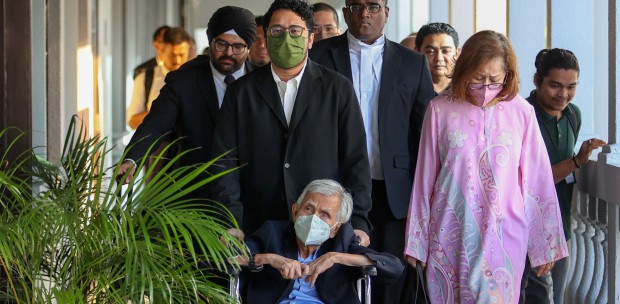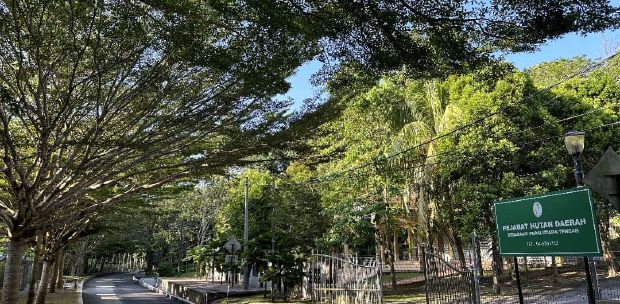LAST Thursday, I received a request from town planners Nik Ramly and Ramzy, that I read a document they had just sent me and then write a short commentary on it for the general public.
That document is a recent judgment of the Court of Appeal concerning the Taman Rimba Kiara Project. The principal issue before the court, as stated by Datuk Mary Lim Thian Suan JCA (who wrote the 90 page judgment) is "the question of locus standi to initiate judicial review proceedings against the local authority in matters concerning planning and development".
The 10 appellants in the case had sought an order of certiorari to quash the project. They also sought an order of mandamus to have the first respondent (Datuk Bandar Kuala Lumpur) adopt the draft Kuala Lumpur Local Plan 2020 and publish it in the Gazettle.
Their application for judicial review was dismissed by the High Court on November 28, 2018. Aggrieved by that decision, they appealed to the Court of Appeal.
In its written judgment dated 27 January 2021, the latter allowed the appeal and set aside the decision of the High Court.
Based on her written judgment, I summarise the chronology of the case as follows –
1. An advertisement in local newspapers (from June 14th to 16th, 2016) had invited comments or objections on the proposed development;
2. The appellants objected, stating that the proposed development "will significantly increase the density of TTDI and irreversibly degrade Taman Rimba Kiara as a green lung";
3. On August 18, 2016, the first respondent issued a notice of a hearing scheduled for August 29, 2016;
4. At the hearing, the appellants discovered that the proposed development included a proposal to construct a new flyover together with a six to eight lane highway-cum-expanded road network in TTDI;
5. On August 10, 2017, the appellants learnt that the Datuk Bandar had granted a Development Order for the proposed development. The Development Order was isued on July 13, 2017;
6. On August 11, 2017, the appellants filed a judicial review application. They gave two reasons – (i) the decision to approve was tainted with illegality, irrationality and procedural impropriety; (ii) the appellants have a legitimate expection that the land will remain an open space. Leave was granted on August 23, 2017.
7. On November 28, 2018, the High Court dismissed the appellants' application on two grounds – the appellants have no locus standi, and that the decision to approve the project was valid. Against that decision, the appellants appealed to the Court of Appeal.
8. On January 27, 2021, a three-member panel of the Court of Appeal unanimously allowed the apeal with costs, and set aside the decision of the High Court.
Why did the Court of Appeal overturn the High Court's decision?
At paragraph 74 of her judgment, Datuk Mary said Rule 5(3) of the Planning Rules (which gives locus standi only to owners of lands adjoining the land to be developed) is "not relevant for the purposes of determining locus standi in relation to the application for judicial review".
At paragraph 75, she added, that Order 53 Rule 2(4) of the Rules of Court 2012 does not require such persons to further establish their right under specific law before they are entitled to initiate judicial review proceedings.
There is only one single test, that is, whether the appellants are adversely affected by the impugned decision. As judicial review proceedings are brought in the area of public law, rules of Court must be read more liberally and with greater flexibility.
At paragraph 76, she said that the appellants in this case undoubtedly have the capacity to bring legal proceedings because (as she stated in paragraph 77) they have "real and genuine interest in the subject matter of the judicial review" – i.e. the effect the impugned decisions have on them.
At paragraph 78, she said even if any of the appellants did not qualify to be notified under Rule 5(3), nevertheless they have a right to bring the judici
al review application. The first respondent (DBKL, as a local authority), owes a duty "at common law to notify and hear objections from adjoining landowners in order to be regarded as having acted fairly in making its decision."
She cited the case of Lee Freddie v Majlis Perbandaran Petaling Jaya [1994] 3 MLJ 640 where Mahadev Shanker J said that the practice of notifying adjoining landowners as set out in section 21(6) of the Town and Country Planning Act
1976 was "merely declaratory of what good administration practice is".
Officials in our local planning authorities are urged to read this important judgement of the Court of Appeal and learn from it.
The writer, a former federal counsel at the Attorney-General's Chambers, is deputy chairman of the Kuala Lumpur Foundation to Criminalise War






